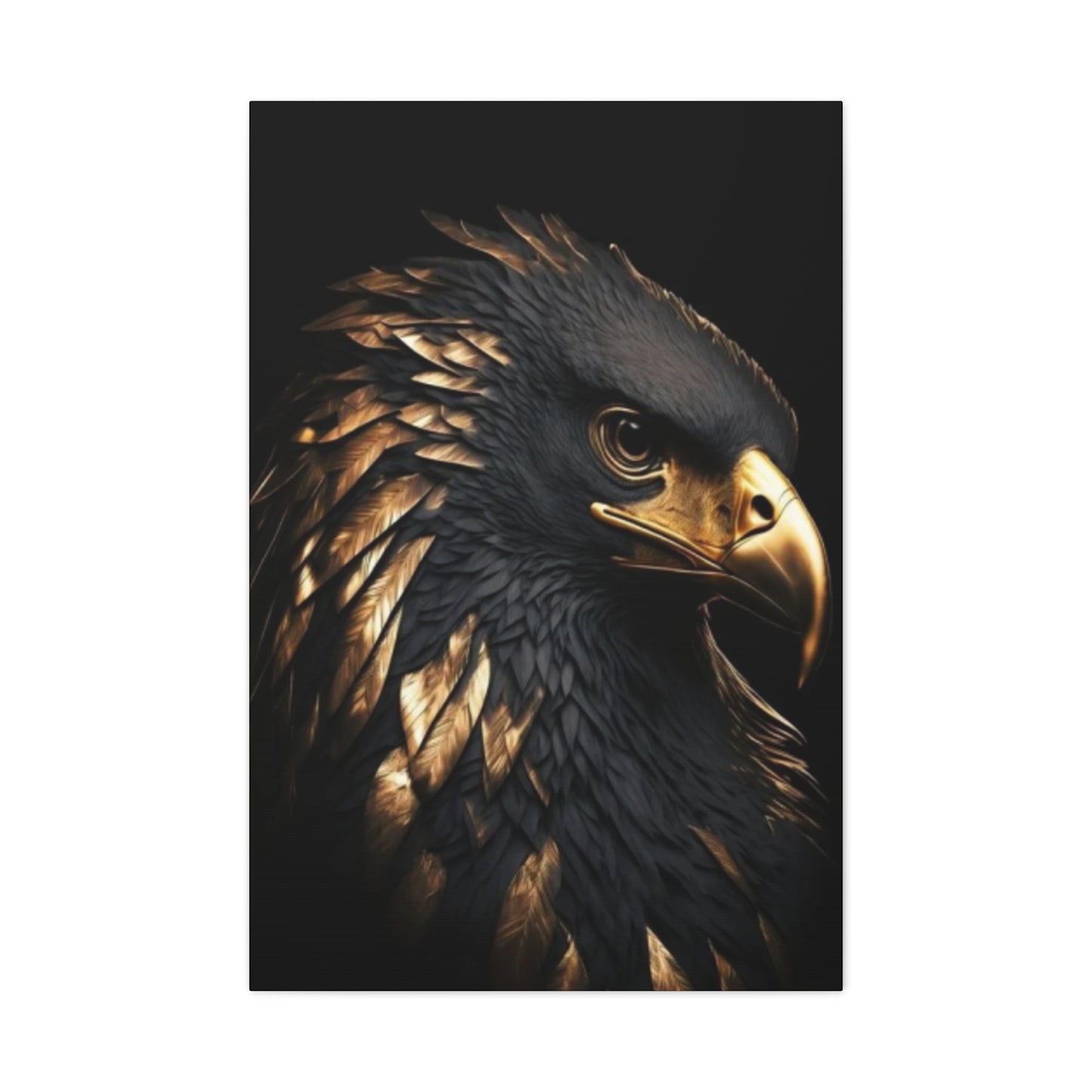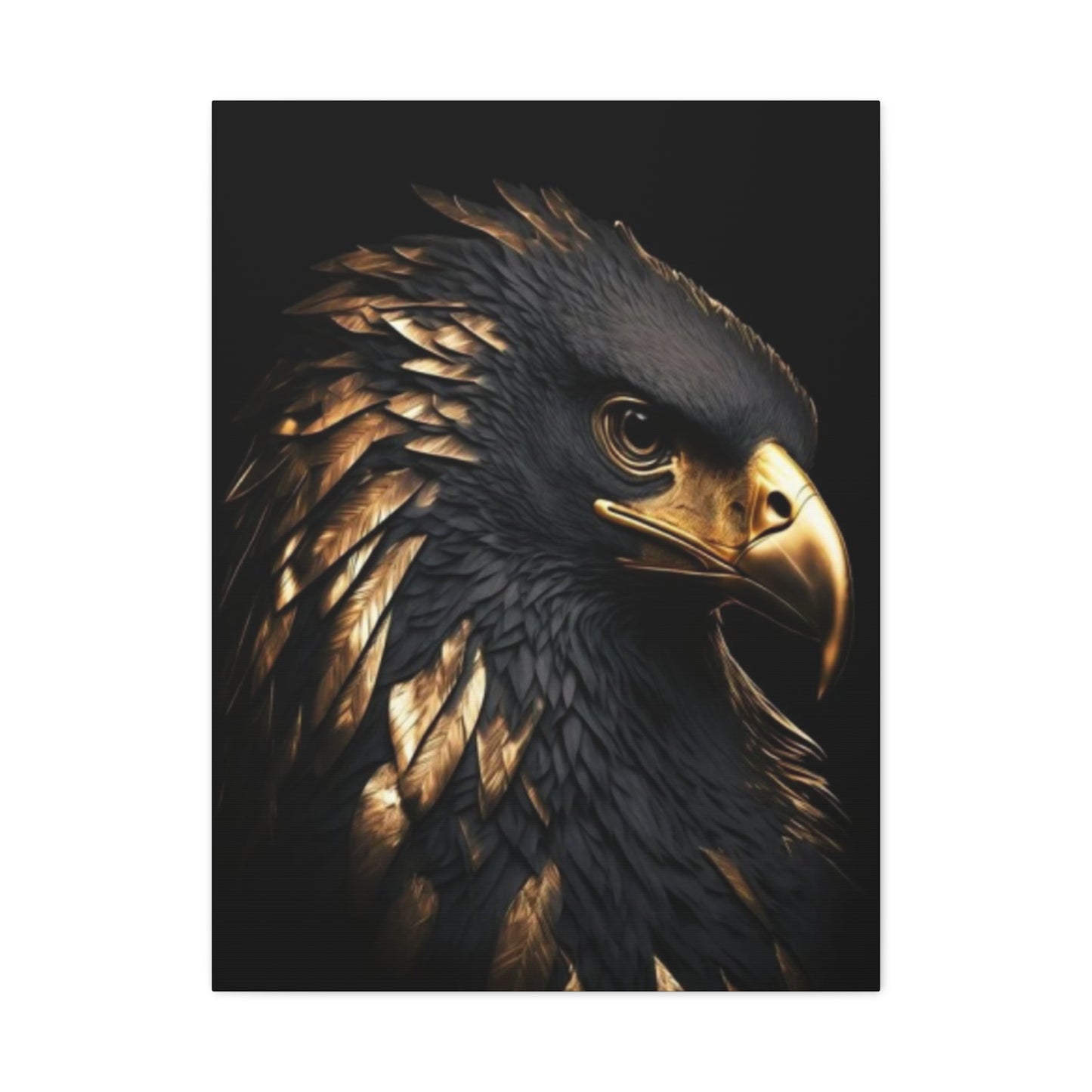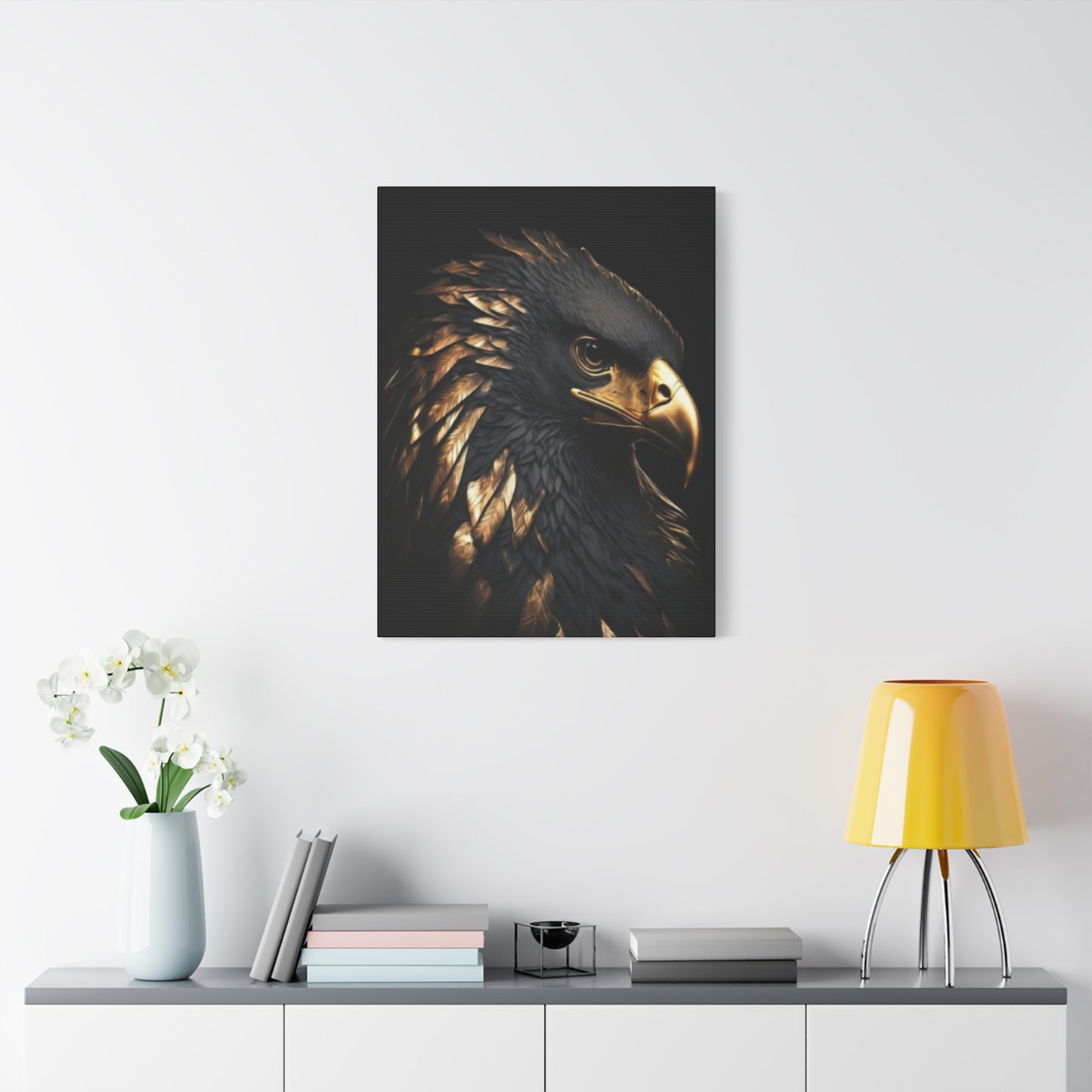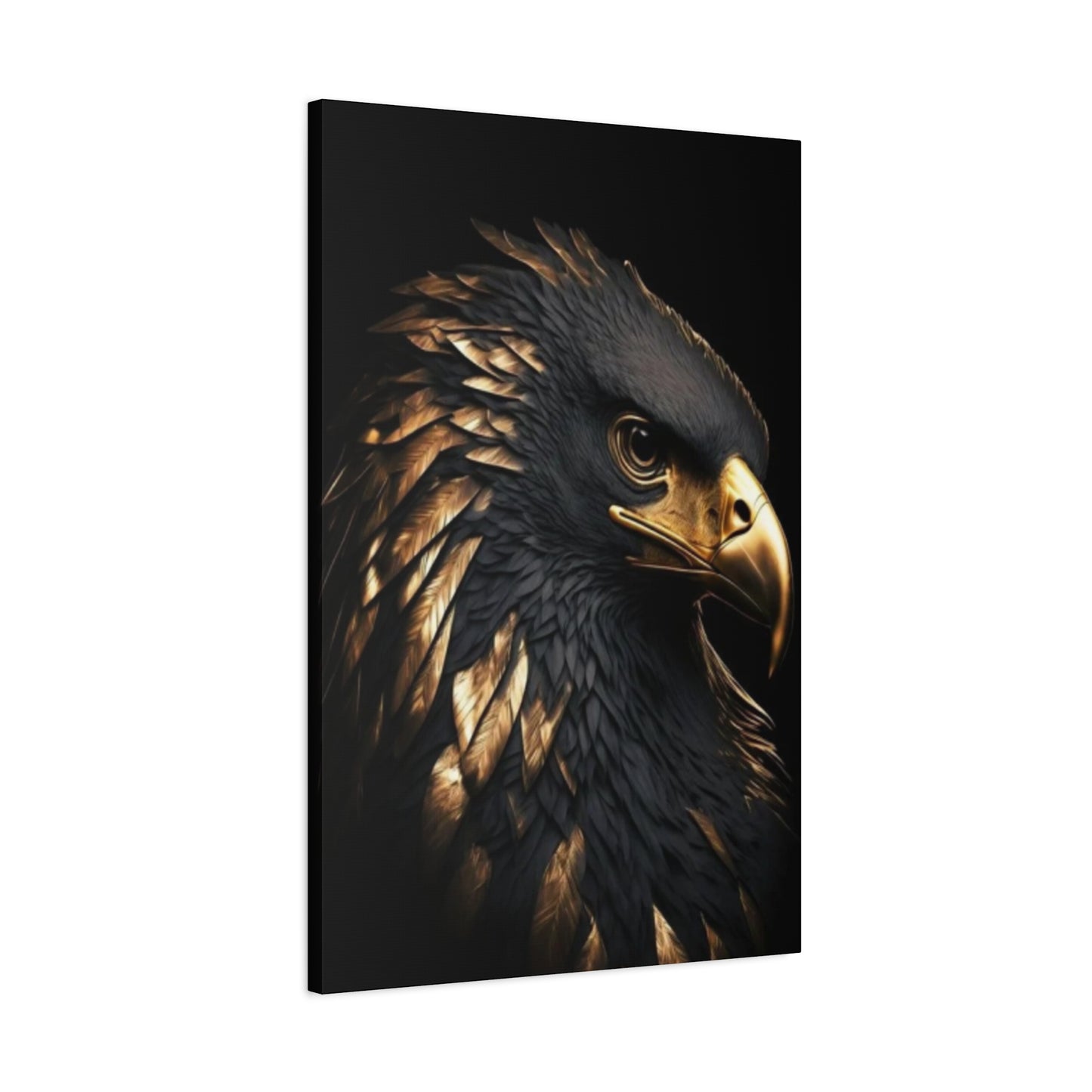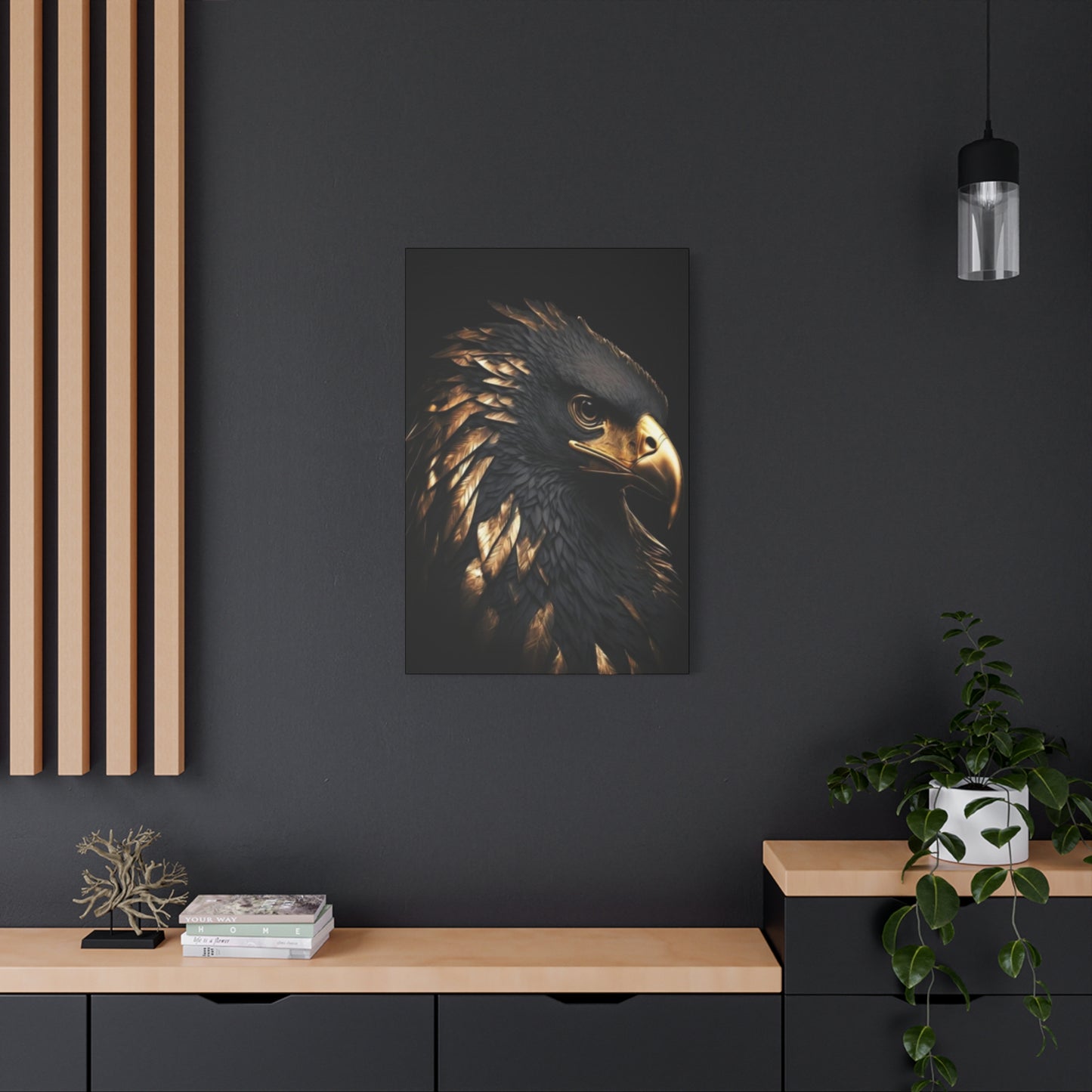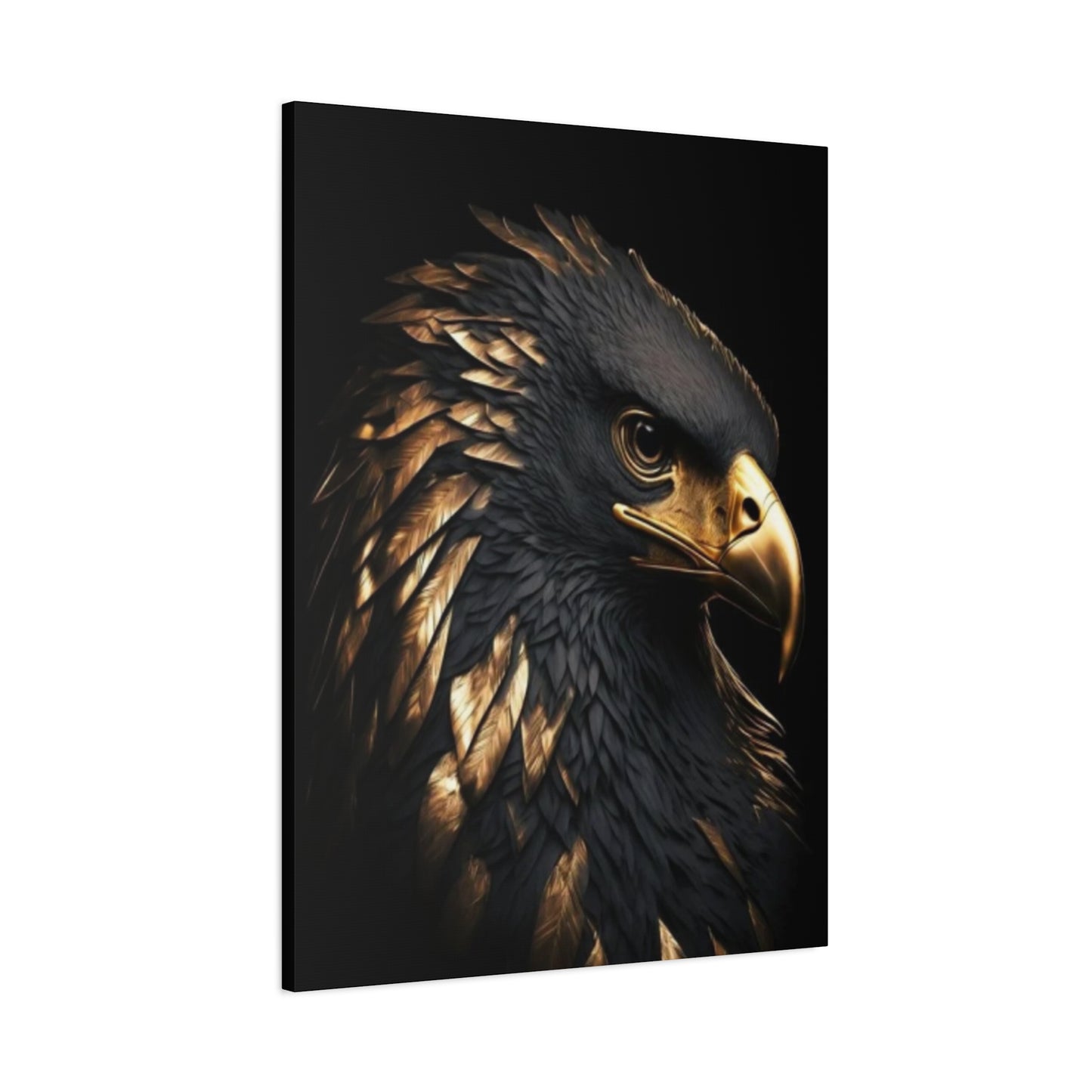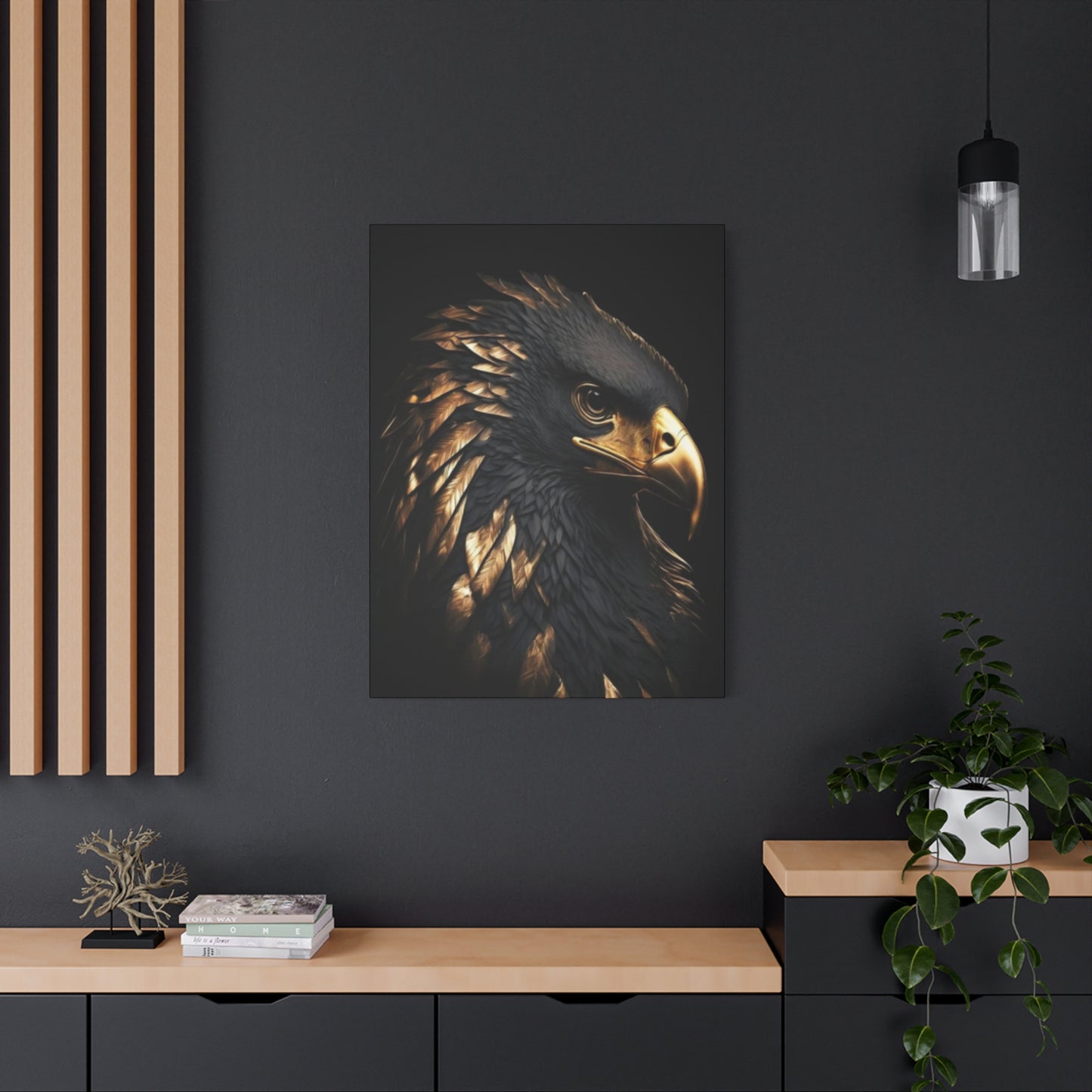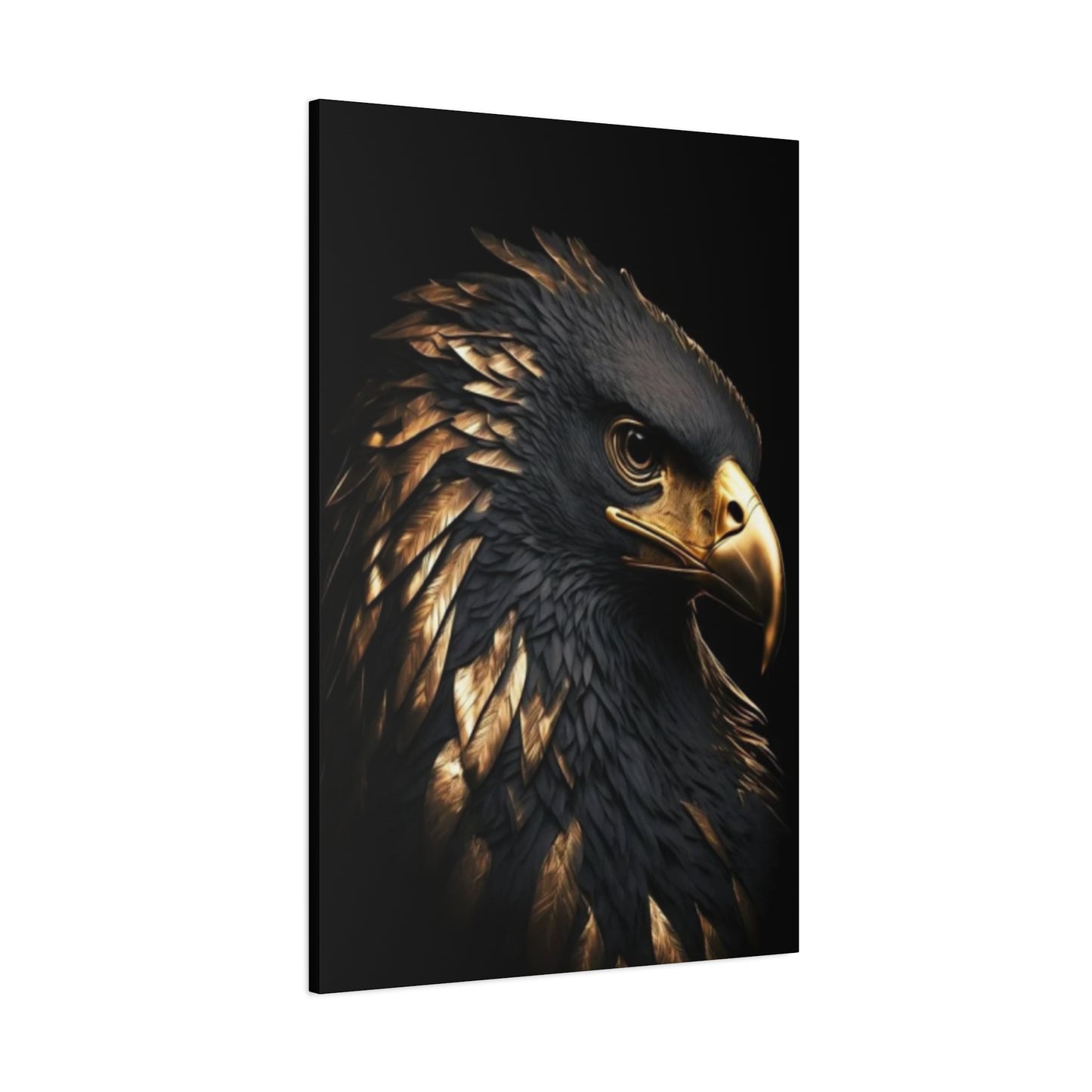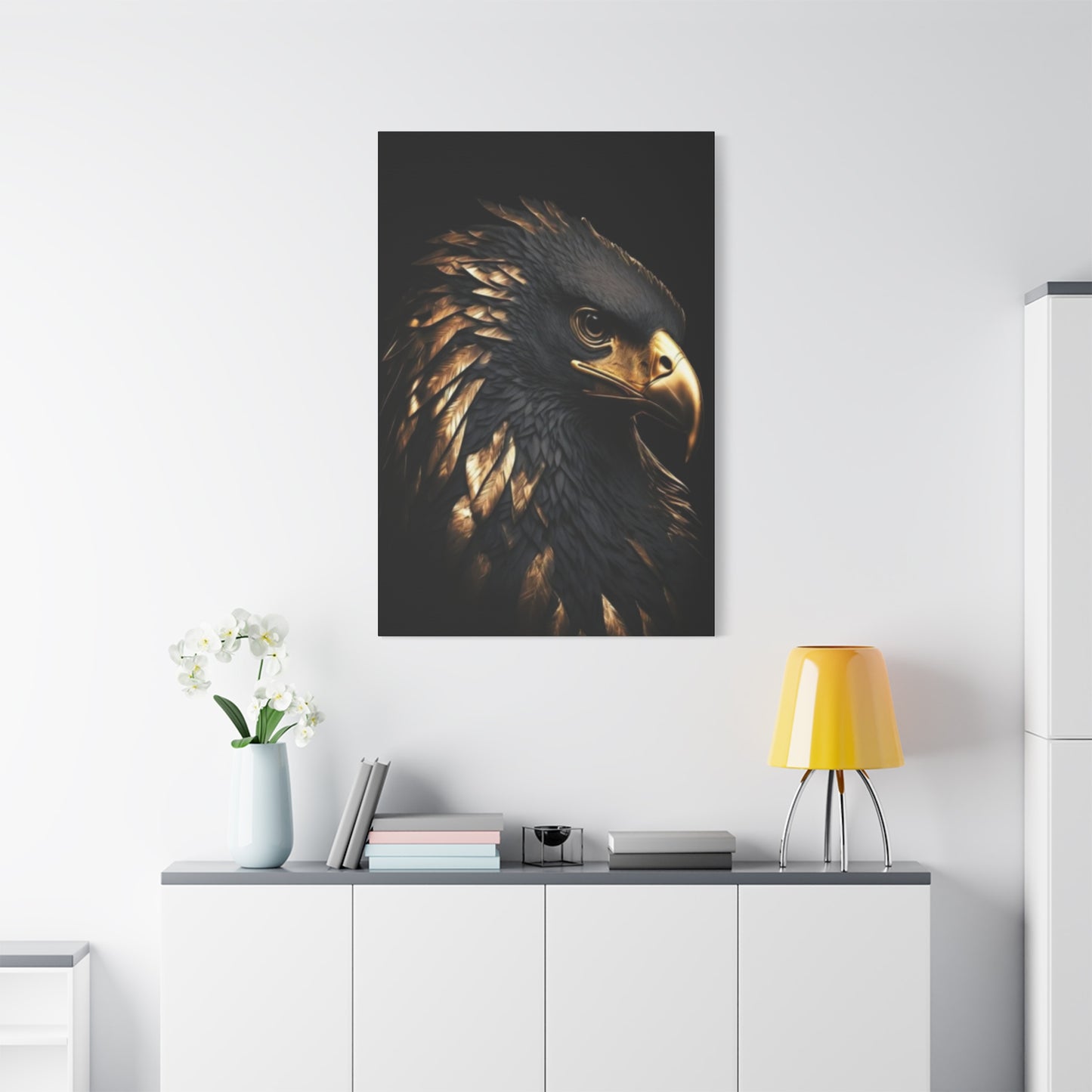Majestic Majesty: A Definitive Guide to Golden Eagle Wall Art
The golden eagle, a symbol of power, freedom, and divine majesty, has captivated the human imagination for millennia. Its soaring flight, keen vision, and formidable presence have made it a revered creature across cultures and throughout history. To bring this potent symbolism into our personal environments is to invite a sense of inspiration, strength, and connection to the natural world. Golden eagle wall art offers a profound way to achieve this, transforming a simple wall into a canvas of narrative and meaning. This comprehensive guide explores every facet of incorporating this magnificent avian artwork into your home, from choosing the right style and location to understanding its deep cultural roots and pairing it with your existing decor.
Whether you are drawn to the intricate detail of a realistic rendering or the evocative power of an abstract form, this art has the unique ability to elevate an atmosphere, create a focal point, and reflect a deep appreciation for wildlife. It is more than mere decoration; it is a statement of values, an homage to the untamed spirit of nature, and a daily source of motivation. We will delve into the nuances of metallic finishes, the impact of framing and lighting, and the art's role in various thematic settings, providing you with the knowledge to select and display a piece that resonates with your personal aesthetic and aspirations.
Abstract Versus Realistic Golden Eagle Art Styles
The portrayal of the golden eagle in art can be broadly categorized into two dominant styles: realism and abstraction. Each approach offers a distinct emotional and aesthetic experience, catering to different sensibilities and decorative goals. Choosing between them is a matter of personal preference and the desired atmosphere for a particular setting. Realistic golden eagle wall art is a celebration of nature's perfection. Artists working in this style strive to capture the bird with photorealistic accuracy, paying meticulous attention to every detail. The texture of the feathers, the intense glint in the eagle's eye, the precise curvature of its beak, and the powerful musculature of its talons are all rendered with exceptional skill.
This style is for the naturalist, the wildlife enthusiast who marvels at the creature's biological magnificence. It brings a piece of the wild, untamed world directly into the home in a way that feels authentic and immediate. The color palette often mirrors nature, with rich browns, deep blacks, and brilliant golds, creating a lifelike portrait that can serve as a stunning focal point. This approach doesn't just depict an eagle; it tells the story of a specific, living being, frozen in a moment of flight, perch, or hunt.On the other end of the spectrum, abstract golden eagle art prioritizes emotion, movement, and symbolism over literal representation. Here, the artist deconstructs the eagle's form into essential shapes, lines, and colors.
The focus might be on the explosive energy of the eagle taking flight, represented by a dynamic slash of gold paint across the canvas, or the serene majesty of its silhouette against a setting sun, simplified into a few elegant curves. Abstraction invites interpretation and engages the viewer's imagination more actively. It speaks to the essence of the eagle—its spirit, its freedom, its power—rather than its physical form. This style is often favored in modern, minimalist, or contemporary environments where it can introduce a powerful symbolic element without overwhelming the decor with intricate detail.
Optimal Placements for Golden Eagle Canvas Prints
Selecting the right location for your golden eagle canvas prints is crucial to maximizing their visual and symbolic impact. The placement should be thoughtful, considering the function of the room, the existing decor, and the message you wish to convey. The living room or great room is often the most prominent gathering area in a home, making it an ideal candidate for a statement piece. A large-scale golden eagle canvas print hung above a sofa or fireplace immediately establishes a powerful focal point. In this central location, the artwork serves as a conversation starter, reflecting a homeowner's appreciation for nature, strength, and freedom.
The eagle's commanding presence can anchor the entire room's arrangement, influencing the atmosphere with a sense of grandeur and inspiration. It sets a tone of sophistication and worldly appreciation, welcoming guests with a display of powerful natural beauty.Another highly effective location is the home office or study. This is a personal environment dedicated to focus, ambition, and achievement. The golden eagle is a universal symbol of vision, intelligence, and power—qualities directly aligned with professional and personal growth. Placing golden eagle wall art in your line of sight can serve as a daily source of motivation.
The image of the soaring eagle can be a reminder to aim high, maintain a broad perspective, and pursue your goals with tenacity. It transforms the work environment from a place of mere tasks to one of aspiration. Similarly, an entryway or foyer is a transitional area that creates the first impression of your home. Hanging a majestic eagle print here makes a bold statement from the moment someone steps inside. It suggests a home that values strength, independence, and a connection to the wild. This placement is particularly effective for pieces that depict the eagle in flight, creating a sense of dynamic energy and forward movement that energizes the arrival experience.
Harmonizing Golden Eagle Art with Rustic and Modern Decor
The versatility of golden eagle wall art is one of its greatest strengths, allowing it to integrate seamlessly into a wide range of decorative themes, most notably rustic and modern. Each style highlights different facets of the eagle's character, creating a unique and cohesive aesthetic. In a rustic setting, which emphasizes natural materials, rugged textures, and an earthy color palette, golden eagle artwork feels entirely at home. This style often features elements like reclaimed wood furniture, exposed ceiling beams, stone fireplaces, and leather upholstery. A realistic portrait of a golden eagle, with its rich brown and gold plumage, complements these organic tones perfectly.
The artwork enhances the theme of celebrating the untamed wilderness. Imagine a large canvas print of an eagle perched on a gnarled branch hanging above a heavy oak mantelpiece; it becomes the room's narrative centerpiece, evoking the feeling of a mountain lodge or a secluded cabin. The key is to choose art where the background elements, such as mountains, forests, or a stormy sky, also align with the rugged, naturalistic vibe of the rustic theme.Conversely, golden eagle art can be a striking addition to a modern decor scheme, which is characterized by clean lines, geometric shapes, a neutral color palette, and a lack of clutter. In this context, an abstract or minimalist interpretation of the eagle is often most effective.
A simple golden eagle silhouette against a stark white or charcoal background can provide a powerful graphic element without disrupting the simplicity of the arrangement. A multi-panel artwork that breaks the image into several geometric canvases adds a contemporary, artistic flair. The metallic gold accents often found in this type of art resonate beautifully with the metals—such as chrome, brushed nickel, or brass—frequently used in modern furniture and lighting fixtures. The eagle introduces a touch of organic, symbolic power into an otherwise structured and man-made environment. It acts as a point of contrast, a reminder of the wild world beyond the sleek, polished surfaces.
Elevating Eagle Art with Complementary Metallic Gold Accents
The use of metallic gold within a piece of golden eagle wall art adds a layer of opulence and dynamism. The way light plays across these gilded surfaces can make the artwork feel alive, shifting its appearance throughout the day. To fully leverage this effect, it is essential to thoughtfully incorporate other metallic gold accents throughout the room. This creates a cohesive and intentionally styled environment where the artwork is not an isolated element but the cornerstone of a deliberate aesthetic. The goal is to create a visual echo, where the gold in the art is picked up by other objects, guiding the eye around the room and unifying the overall look. A simple yet effective way to start is with the frame itself. A slim, elegant gold frame can beautifully encapsulate a metallic eagle print, enhancing its perceived value and drawing attention to the gilded details within the canvas.
Beyond the frame, consider introducing gold accents in varying textures and finishes. A brushed gold floor lamp placed near the artwork can provide direct illumination that makes the metallic details shimmer after dark. On a nearby console table, a small collection of decorative objects—a gold-leafed bowl, a brass statuette, or a vase with gold trim—can subtly reinforce the theme. Even small hardware details, such as the handles on a cabinet, the legs of a coffee table, or the knobs on a door, can be switched to a gold finish to create a sense of continuity. In the living room, scatter a few throw pillows with gold-threaded patterns on the sofa. In a dining area, gold-rimmed chargers or flatware can tie the eating area to the artwork on the wall. The key is to achieve balance.
The Motivational Power of Golden Eagle Art in Office and Study Environments
The home office, study, or any place of work is more than just a functional area; it is an environment that should foster focus, creativity, and ambition. The choice of decor plays a significant role in shaping this atmosphere, and few images are as symbolically potent as the golden eagle. Incorporating golden eagle wall art into these professional settings leverages the bird's deep-seated association with leadership, vision, and success. The eagle is renowned for its incredible eyesight, often referred to as "eagle eye," which symbolizes the ability to see the bigger picture, identify opportunities from afar, and maintain a clear perspective amidst complexity. Hanging a depiction of a golden eagle in your workspace serves as a powerful, non-verbal reminder to approach challenges with foresight and clarity.
Furthermore, the golden eagle embodies concepts of power, dominance, and freedom. Its position as an apex predator in its ecosystem translates into a symbol of reaching the top of one's field. An artwork featuring a soaring eagle can inspire a feeling of limitless potential and the courage to break free from conventional constraints. It can be particularly motivating during moments of difficulty or creative block, offering a visual anchor to the idea of resilience and perseverance. The majestic bird doesn't just fly; it soars on thermal currents with minimal effort, a metaphor for working smarter, not harder, and leveraging one's strengths to achieve great heights. Whether it’s a realistic portrait conveying intense focus or an abstract piece symbolizing dynamic flight, golden eagle art transforms a sterile office into a hub of inspiration.
Essential Framing Considerations for Golden Eagle Wall Art
The frame you choose for your golden eagle wall art is not merely a border; it is an integral part of the overall presentation that can dramatically enhance or detract from the artwork's impact. A well-chosen frame complements the piece, protects it, and helps integrate it into the room's decor. The first consideration is the material and color of the frame. For realistic, nature-themed eagle paintings with earthy tones, a solid wood frame is often an excellent choice. A dark walnut or rich mahogany frame can add warmth and a traditional, stately feel, while a lighter, natural oak or rustic barnwood frame can enhance a more casual, cabin-like aesthetic. For more contemporary or abstract eagle art, especially pieces with metallic gold accents, a metal frame is a superb option.
Beyond the material, the style and width of the frame matter. A large, commanding piece of eagle art often benefits from a substantial frame that gives it a sense of weight and importance. Conversely, a minimalist print, such as an eagle silhouette, may look best in a very thin, gallery-style frame that keeps the focus squarely on the image itself. The use of a mat is another critical decision. A mat is the paper-like border between the artwork and the frame. For smaller prints, a wide, crisp white or off-white mat can provide visual breathing room, making the piece appear larger and more significant. It also helps separate the art from a busy or patterned wall. For a more dramatic effect, a dark mat, such as charcoal or even black, can be used to intensify the colors and details within the eagle artwork.
Creating a Cohesive Look: Blending Nature and Wildlife Themes with Eagle Pieces
A single piece of golden eagle wall art can be a powerful statement, but its impact can be magnified when it is part of a larger, curated collection of nature and wildlife-themed decor. Creating a cohesive arrangement allows you to tell a broader story about your love for the natural world. One of the most effective ways to do this is by creating a gallery wall. A gallery wall centered around a significant golden eagle piece can be expanded with smaller works depicting other elements of its ecosystem. Consider pairing the eagle with prints of majestic mountain landscapes, serene forest scenes, or other wildlife that shares its habitat, such as deer, wolves, or bears.
This thematic combination extends beyond just wall art. You can weave the nature and wildlife motif throughout the room's accessories. For example, in a living room featuring a prominent golden eagle canvas, you could introduce throw pillows with a subtle pine tree pattern, a rug with a design reminiscent of animal tracks, or a lamp with a base made of natural wood or stone. Books about wildlife or national parks stacked on a coffee table can further reinforce the theme. The key is to create layers of interest that feel organic rather than overly literal. You don't need every single item to feature an animal; instead, focus on a blend of textures, colors, and patterns that evoke a natural, outdoor feeling.
Large Canvas Versus Multi-Panel Golden Eagle Artwork
When selecting golden eagle wall art, one of the most significant decisions you will make is the format and scale of the piece. The choice between a single large canvas and a multi-panel arrangement can completely alter the visual dynamics of a room. A single, large-format canvas is a classic choice for making a bold and unequivocal statement. It creates an immediate and powerful focal point, drawing all attention to the majestic image of the eagle. This format is particularly well-suited for realistic, highly detailed portraits, where the large scale allows the viewer to appreciate the intricate artistry of the feathers, the intensity of the eye, and the overall grandeur of the bird. A single large canvas works best on a prominent, unbroken wall, such as the area above a large sofa, a bed's headboard, or a long wall in a dining room.
On the other hand, a multi-panel golden eagle artwork offers a more modern and dynamic alternative. This format, also known as a diptych (two panels), triptych (three panels), or polyptych (many panels), breaks a single image into multiple sections. This fragmentation adds a layer of visual interest and rhythm, encouraging the eye to move across the wall and piece the image together. Multi-panel arrangements are excellent for covering a large wall area in a unique and contemporary way. They can make the artwork feel more integrated with the architecture of the room, as the gaps between the panels interact with the wall itself. This format is particularly effective for images that emphasize movement and energy, such as an eagle in full flight with its wings spread wide. The separation between panels can enhance the sense of motion and expansion.
Exploring Golden Eagle Silhouettes
In a world of visual complexity, sometimes the most powerful statements are the simplest. Golden eagle silhouettes offer a perfect example of this principle, embodying elegance and potency through minimalist design. A silhouette strips away all detail—color, texture, and shading—leaving only the pure, iconic form of the bird. This reduction to its most essential shape allows the eagle's powerful profile to take center stage. The unmistakable curve of its hooked beak, the noble shape of its head, and the expansive outline of its wings in flight are instantly recognizable and deeply evocative. This simplicity is its strength. Without the distraction of intricate details, the viewer is left to contemplate the raw symbolism of the eagle: freedom, vision, and untamed spirit.
This minimalist approach makes golden eagle silhouettes incredibly versatile and well-suited for a variety of contemporary decor styles. In a minimalist or Scandinavian-inspired setting, where the mantra is "less is more," a clean, crisp eagle silhouette provides a strong graphic focal point without adding clutter. Typically rendered in black against a white or light-colored background, it adheres to a neutral color palette while introducing a dynamic, organic shape. Silhouettes also work beautifully in industrial-themed environments, where their stark, graphic nature can complement raw materials like exposed brick, concrete, and metal. Furthermore, you can play with color to match a specific aesthetic. A white silhouette on a dark charcoal or navy wall can create a dramatic, moody effect.
Golden Eagle Art as a Motivational Beacon
Art in the home should do more than just fill a blank wall; it should resonate on a personal level, evoke emotion, and ideally, inspire. Golden eagle wall art excels in this regard, serving as a powerful motivational piece that can influence the mindset of those who live with it. The symbolism of the golden eagle is rich with qualities that we aspire to cultivate in our own lives. Its ability to soar to great heights is a potent metaphor for aiming high and achieving one's goals. The sight of an eagle in flight encourages a sense of limitless possibility and the ambition to rise above challenges. In moments of self-doubt or stagnation, this visual representation can act as a catalyst, reminding us of our own potential for greatness.
The eagle's legendary vision is another source of profound motivation. Eagles are known to be able to spot their prey from miles away, a biological marvel that translates symbolically into foresight, clarity, and the ability to focus on a distant goal without getting lost in immediate, minor obstacles. Having a depiction of an eagle's intense, focused gaze in your home can be a daily reminder to maintain perspective, to plan for the future, and to keep your "eye on the prize." This aspect is particularly valuable for entrepreneurs, students, or anyone embarking on a long-term project. The eagle represents not just raw power, but intelligent, focused power. It embodies the principle of strategic patience and decisive action. By choosing to live with this imagery, you are subconsciously aligning yourself with these powerful attributes.
Spiritual and Tribal Dimensions in Golden Eagle Imagery
Across countless cultures and spiritual traditions, the golden eagle is revered as a sacred and powerful being. Its ability to fly higher than other birds has led many to view it as a messenger of the gods, a bridge between the earthly and divine realms. Incorporating golden eagle wall art that draws from these spiritual and tribal aesthetics brings a layer of deep, historical meaning into your home. In many Native American cultures, for instance, the eagle is considered the most sacred of all birds. Its feathers are used in spiritual ceremonies, and the bird itself represents honesty, truth, courage, and wisdom. Art inspired by these traditions may feature the eagle depicted with symbolic patterns, geometric designs, or within a larger narrative scene involving other sacred elements like the sun, moon, or totem animals.
Other global traditions also hold the eagle in high esteem. In ancient Rome, the eagle, or 'aquila,' was the standard of the Roman legions, symbolizing the power and might of the Empire. In Norse mythology, an eagle sits at the top of Yggdrasil, the world tree, representing wisdom and a broad overview of the cosmos. Art reflecting these influences might adopt a more classical or mythological style. You might find pieces that depict the eagle in a regal, heraldic pose, perhaps with a more stylized, graphic quality. Tribal art from various regions often uses bold lines and symbolic colors to capture the spirit of the eagle rather than its literal form.
Creative Expression: DIY Golden Eagle Stencil Wall Art
For those with a creative spirit and a desire for a truly unique piece of decor, a DIY golden eagle stencil project offers a rewarding and personalized way to bring this majestic bird to your walls. This approach allows for complete control over color, scale, and placement, ensuring the final artwork perfectly matches your vision and your room's aesthetic. The process begins with sourcing a stencil. You can find a wide variety of golden eagle stencils online, ranging from simple silhouettes to complex, multi-layered designs that allow for intricate detail. Choose a size that is appropriate for your intended wall; a large stencil can create a dramatic focal point, while a smaller one could be used to create a repeating pattern or a subtle accent.
The application itself is straightforward. Secure the stencil to the wall with painter's tape, ensuring it is level and flat. Using a stencil brush or a small foam roller, apply the paint in thin, even coats. It's better to build up the color with two or three light coats rather than one heavy coat, as this prevents the paint from bleeding under the stencil's edges. Once the final coat is applied but before it is fully dry, carefully remove the stencil to reveal your crisp, clean design. You can take this project a step further by adding a background effect. For instance, you could paint a soft, blended watercolor-style background on the wall before applying the stencil, or even create a subtle texture with a sponge.
Maximizing the Impact of Metallic Eagle Prints
Metallic golden eagle prints possess a unique, chameleon-like quality. Their appearance is not static; it is a dynamic interplay of surface and light. The metallic gold elements—whether foil, ink, or leaf—are designed to catch and reflect light, creating a sense of depth, luxury, and movement. To fully unlock the potential of such a piece, the lighting in the room must be considered with intention. Proper lighting can transform a beautiful print into a breathtaking focal point that seems to glow from within. Natural light is a powerful tool. Placing your metallic eagle art on a wall adjacent to a window, rather than directly opposite it, allows the changing daylight to graze across its surface.
Artificial lighting offers more control and can be used to create a dramatic effect, especially in the evening. The best option is to use a dedicated picture light or a spotlight mounted on the ceiling. Position the light at a 30-degree angle to the artwork. This angle is optimal as it provides even illumination across the surface while minimizing glare and reflection. A warmer light bulb temperature (around 2700K) can enhance the richness of the gold tones, making them appear more opulent. A cooler light might create a more modern, silvery-gold effect. Dimmable lights are an excellent choice as they allow you to adjust the intensity to suit the mood—a bright, dramatic spotlight for entertaining guests, or a soft, subtle glow for a quiet evening.
A Natural Fit: Incorporating Golden Eagle Art in Hunting Lodges
The aesthetic of a hunting lodge or a rustic cabin is deeply rooted in a celebration of the wilderness, rugged masculinity, and the traditions of the outdoors. It is an environment built with natural materials like heavy timber, river rock, and worn leather, often adorned with artifacts that speak of a life lived in close connection with nature. Within this specific context, golden eagle wall art is not just a suitable choice; it is a quintessential one. The golden eagle, as an apex predator and a symbol of the untamed wild, perfectly encapsulates the spirit of such a retreat. A large, realistic canvas depicting a golden eagle against a backdrop of snow-capped mountains or a dense pine forest can serve as the majestic centerpiece of a lodge's great room, hanging proudly above a grand stone fireplace.
The artwork seamlessly complements the other typical decor elements of a lodge. It resonates with the textures of animal hides, the warmth of wood paneling, and the earthy color palette of the surroundings. The eagle's themes of skill, patience, and keen vision—all qualities prized by a hunter—add a layer of symbolic meaning that goes beyond mere decoration. It represents an admiration for the power and intelligence of wildlife, a core tenet of ethical sportsmanship. Pairing the eagle art with other appropriate items, such as antique maps, vintage hunting gear, or taxidermy, creates a rich, layered narrative of adventure and respect for nature. The golden eagle's commanding presence enhances the lodge's atmosphere of strength and sanctuary, making it a place where one can feel both connected to the wild and comfortably sheltered within it.
Golden Eagle Art Gifts for Wildlife Enthusiasts
Finding the perfect gift for a wildlife enthusiast—be it a bird watcher, a conservationist, a hiker, or simply a nature lover—can be a challenge. The ideal gift should be personal, meaningful, and reflective of their passion. Golden eagle wall art checks all these boxes, making it an exceptional and thoughtful choice. It is more than just a decorative object; it is a tribute to the very world they cherish. For a dedicated bird watcher, a hyper-realistic print that captures the intricate details of the golden eagle's plumage and form is a gift that will be endlessly appreciated. They will admire the artist's ability to accurately render a creature they have spent hours observing and studying. It allows them to bring their passion indoors, to admire the beauty of this magnificent raptor up close, every single day.
For someone involved in wildlife conservation, the gift of golden eagle art can carry an even deeper meaning. It serves as a beautiful reminder of what they are working to protect. The artwork can be a source of inspiration and a symbol of the importance of preserving natural habitats for these incredible creatures. You could even choose a piece from an artist who donates a portion of their proceeds to conservation efforts, adding another layer of significance to the gift. For the general nature lover, the art represents a connection to the untamed spirit of the wilderness. It's a piece of that wildness they can have in their home, a window to the majestic landscapes they love to explore. When giving such a gift, including a small note about the symbolism of the golden eagle—its representation of freedom, vision, and strength—can make the gesture even more personal and impactful.
Current Trends in Wildlife-Inspired Metallic Wall Art
The world of home decor is constantly evolving, and wildlife-inspired art is no exception. While the subject matter may be timeless, the styles and techniques used to depict it change to reflect contemporary tastes. One of the most significant current trends is the sophisticated use of metallic finishes, particularly gold, in wildlife wall art. This is not the garish, heavy gold of the past, but rather a subtle, elegant application that adds a touch of modern luxury. Gold foil, metallic inks, and gold leaf are being used to highlight specific features of an animal, like the golden plumage of an eagle, or to create abstract, shimmering backgrounds. This trend merges the organic beauty of the natural world with a chic, glamorous aesthetic, making it suitable for a wide range of modern homes.
Another prominent trend is the fusion of geometric elements with wildlife imagery. Artists are overlaying crisp lines, honeycombs, triangles, or fragmented patterns on top of or within realistic depictions of animals like the golden eagle. This juxtaposition of the soft, natural form of the creature with the hard, precise lines of geometry creates a visually arresting piece that feels very contemporary and artistic. It speaks to a modern sensibility that finds beauty in the intersection of the natural and the man-made. Furthermore, there is a move towards minimalism and deconstruction. Instead of a full, detailed portrait, the trend might be for a simple line drawing of an eagle, or an abstract piece that captures the essence of flight in just a few powerful brushstrokes. These trends indicate a desire for wildlife art that is not just a literal representation, but a stylish, artistic interpretation that functions as a sophisticated piece of modern art in its own right.
How to Maintain and Care for Metallic Gold Art Finishes
Artwork featuring metallic gold finishes requires a bit of special attention to ensure its luster and brilliance last for years to come. The delicate nature of gold foil, leaf, and metallic inks means they can be susceptible to damage from improper handling, cleaning, and environmental factors. The most frequent maintenance task will be dusting. It is crucial to use a very soft, dry tool for this. A feather duster or a brand-new, high-quality microfiber cloth is ideal. Never use paper towels or rough rags, as these can contain abrasive fibers that may scratch or dull the metallic surface. When dusting, use a very light touch, gently sweeping the surface rather than applying pressure. For pieces under glass, you can simply clean the glass, but for exposed canvases or prints, direct, gentle dusting is key.
Chemicals are the enemy of metallic finishes. Avoid all-purpose cleaners, glass cleaners, and even water, as these can tarnish, dissolve, or leave permanent spots on the gold elements. If there is a smudge or fingerprint that cannot be removed with a dry cloth, you may lightly dampen a corner of a microfiber cloth with distilled water (which is free of minerals that can leave residue) and gently blot the area. Do not rub. However, it's best to test this on an inconspicuous corner of the artwork first, if possible. The environment where the art is hung also plays a crucial role in its preservation. Direct, prolonged exposure to sunlight can cause the colors to fade and may degrade the metallic finish over time. Hang your golden eagle art on a wall that does not receive harsh, direct sunlight. Additionally, high humidity can be detrimental, potentially causing canvas to warp or finishes to peel. Avoid hanging valuable pieces in bathrooms or other damp locations.
Golden Eagle Art in Patriotic Home Decor
In many nations, particularly the United States, the eagle is more than just a magnificent bird; it is a powerful emblem of national identity, freedom, and strength. The Bald Eagle is the national bird of the USA, but the golden eagle, with its equally commanding presence, is often used interchangeably in patriotic art to evoke similar feelings of pride and liberty. Incorporating golden eagle wall art into your home can be a sophisticated and artistic way to express patriotism, moving beyond the more common and literal displays of flags and banners. A majestic portrait of a golden eagle can serve as a year-round tribute to national values. It's a design choice that is both patriotic and timeless, blending seamlessly into a variety of decor styles without feeling overtly political or tied to a specific holiday.
This theme can be subtly enhanced by the surrounding color palette. Pairing the golden eagle artwork with a backdrop of classic patriotic colors—deep navy blues, rich crimson reds, and crisp whites—can create a cohesive and stately atmosphere. This doesn't have to be overt; a navy blue accent wall, red throw pillows, or white trim can be enough to evoke the theme in an elegant way. The artwork is particularly fitting for a study, a library, or a formal living room, where it can lend a sense of dignity and gravitas. For specific national holidays like the Fourth of Independence or Veterans Day, the golden eagle art can become the centerpiece of your temporary decorations. By choosing a high-quality piece of art, you elevate the expression of patriotism from simple decoration to a statement of enduring national principles, embodied by the noble and free spirit of the eagle.
Combining Gold Tones with Earth Tones in Eagle Art
The visual appeal of golden eagle wall art is often rooted in its rich and resonant color palette, which naturally marries the opulence of gold with the grounded, organic feel of earth tones. This inherent combination is one of the reasons the art is so versatile and visually pleasing. The golden hues in the art, representing the eagle's plumage or used as a metallic accent, bring light, warmth, and a touch of luxury. These shimmering tones can make a room feel more vibrant and sophisticated. However, if overused, gold can feel overwhelming. This is where the earth tones come in to provide balance and harmony. The deep browns, soft tans, rich blacks, and subtle greys that are also part of the eagle's natural coloration and its typical habitat—rocky crags, dense forests, and open skies—ground the artwork and the room's entire color scheme.
To create a cohesive environment, you can pull these colors from the artwork and use them throughout the room. For example, if the eagle art features a deep chocolate brown, consider a leather armchair or a dark wood coffee table in a similar shade. The soft beige or tan colors could be echoed in the wall paint, the rug, or linen curtains. These earth tones create a calm, stable, and welcoming atmosphere that allows the gold accents to truly shine without being ostentatious. This combination is particularly effective because it mirrors the natural world. Think of a vein of gold running through rock, or the glint of sunlight on a tree trunk. It's a palette that feels both luxurious and organic.
Wildlife Conservation Messages Through Golden Eagle Art
Art has always been a powerful medium for communication, capable of conveying complex emotions and ideas without a single word. In an era of increasing environmental awareness, wildlife art has taken on a new role: that of advocacy. Choosing to display golden eagle wall art can be more than an aesthetic decision; it can be a statement of support for wildlife conservation. This majestic bird, while a symbol of power, faces threats from habitat loss, human-wildlife conflict, and environmental changes. An artist's rendering of a golden eagle in its natural, pristine habitat serves as a beautiful and poignant reminder of what is at stake. It celebrates the unparalleled beauty of the natural world and subtly prompts the viewer to consider the importance of protecting it.
Some artists take this message a step further, using their work to explicitly highlight conservation issues. An artwork might depict an eagle soaring over a landscape that is subtly encroached upon by signs of human development, creating a narrative of tension and fragility. Other artists actively partner with conservation organizations, donating a percentage of their sales to fund projects aimed at protecting eagles and their ecosystems. By purchasing and displaying such a piece, the homeowner becomes a participant in this effort. The art becomes a conversation starter, an opportunity to share the story of the golden eagle's plight and the importance of conservation with guests. It transforms the home from a place of passive dwelling to one of active, engaged values. The beauty of the artwork draws people in, and its underlying message encourages a deeper connection and a sense of responsibility towards the natural world.
Mixing Golden Eagle Art with Other Animal-Themed Decor
Creating a home that reflects a love for the animal kingdom can involve more than just a single statement piece. A curated collection of different animal-themed decor can create a rich, layered, and personal environment. However, mixing different animal motifs requires a thoughtful approach to avoid a cluttered or chaotic feel. When introducing other animal art alongside a prominent golden eagle piece, the key is to establish a unifying theme or aesthetic. One successful approach is to group animals by their habitat or region. Your golden eagle, a creature of the mountains and open skies, could be paired with art depicting other North American wildlife, such as bears, deer, wolves, or bison. This creates a cohesive ecological narrative, turning your room into a tribute to a specific wilderness.
Another way to create harmony is through a consistent artistic style. If your golden eagle art is a minimalist line drawing, then other animal art in a similar style—a simple sketch of a horse or a graphic rendering of a lion—will feel like part of a deliberate collection. Similarly, if your eagle is a vibrant, colorful abstract painting, it can be paired with other abstract animal pieces that share a similar color palette or energy. It's also important to consider the symbolic hierarchy. The golden eagle, as a powerful apex predator, often works best as the dominant piece in the collection. Other, smaller pieces can act as complementary accents. For example, a large eagle canvas could be the focal point, with smaller framed prints of other animals arranged around it on a gallery wall.
Conclusion:
Throughout this extensive exploration of golden eagle wall art, a central theme emerges: this is not merely decoration, but an infusion of profound symbolism and natural majesty into the very heart of your home. The decision to display an image of this incredible avian sovereign is a choice to surround oneself with the virtues it represents—vision, power, freedom, and an unbreakable connection to the wild. We have journeyed through the contrasting worlds of abstract and realistic styles, recognizing that while one captures the soul and the other the form, both pay homage to the eagle's magnificent presence.
We have seen how this art can find a fitting place in any room, from the social hub of a living room to the aspirational quiet of a home office, each location drawing a different facet of its motivational power. The remarkable versatility of golden eagle art allows it to harmonize with aesthetics as disparate as rustic warmth and modern minimalism, proving its timeless appeal. By thoughtfully incorporating metallic gold accents, we can amplify its luxurious and dynamic qualities, creating an environment that feels both opulent and grounded.
The practical considerations of framing, lighting, and maintenance are not mere afterthoughts; they are essential steps in honoring the artwork and ensuring its brilliance endures, allowing the piece to command attention and respect. Beyond the single canvas, we have discovered the potential for creating a broader narrative, blending the eagle with other nature-themed pieces or curating a sophisticated menagerie of animal art. From the personal creativity of a DIY stencil project to its poignant role in patriotic themes and its deep roots in tribal spirituality and global history, the image of the golden eagle is a rich and multi-layered symbol.
It is a gift of profound meaning for a wildlife enthusiast, a statement of support for conservation, and a powerful tool for creating a specific mood, whether it be the rugged ambiance of a hunting lodge or the harmonious balance of gold and earth tones in a tranquil retreat. To choose golden eagle wall art is to do more than adorn a wall; it is to make a daily appointment with inspiration. It is to invite a silent, powerful guardian into your personal setting, a constant reminder to soar above the mundane, to view life with a broader perspective, and to embrace the wild, free, and noble spirit that resides within us all.


















